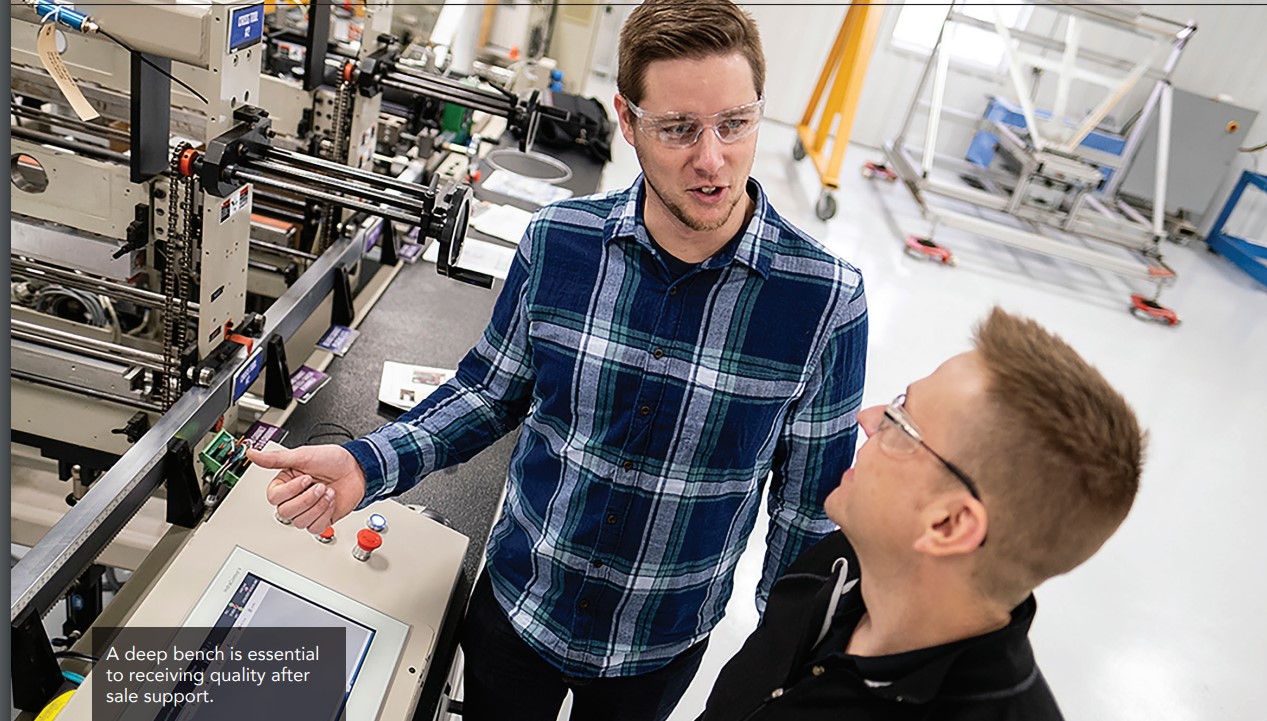Important Considerations When Choosing an OEM
- Published: January 02, 2023
By Scott Fuller, Pouch Equipment Product Line Manager, CMD Corporation
After visiting industry trade shows like Pack Expo and seeing the impressive new technology demonstrated by Original Equipment Manufacturers (OEMS), many of us return to our positions and our companies with ambitious plans for incorporating those latest bells and whistles into our next capital equipment request.
We expect to utilize the latest technology to procure new business, new projects and, if we’re honest, recognition for our well-researched and successful recommendation.
It is quite exhilarating, and daunting, to be responsible for recommending and specifying new equipment. It’s an expensive, serious investment that, if done properly, ensures new growth and success, and if done poorly, could be a very costly mistake.
Companies have their specific methodologies for specifying and purchasing capital equipment. Depending on the cost and complexity, the process can take months, even years. But, whatever the process, the thought and planning that goes into it should include a thorough review of the tangible and less tangible benefits a specific piece of machinery, and the OEM, offer.
Along with the usual specifications required when soliciting an equipment proposal, consider the following when choosing your next OEM.

Experience and Reputation – It’s advisable to select an OEM with substantial experience in the industry, as they bring with them the years of learning gained from commercializing technology. It’s also of value to consider manufacturers newer to the industry who may have fresh ideas, different and better technology and can offer you first-to-market advantages. Of course, when doing so, extra due diligence, referrals and case studies may be warranted.
Examine the OEM Business Model – If standard, off-the-shelf equipment works for your firm, a company that builds banks of machinery with no chance for changes or customization may be the way to go. Often, this model allows for cost advantages that could result in a lower price for you. However, if you need something slightly different, or if your business changes and you require retrofits or adjustments down the line, this type of OEM will likely not be the kind of partner you will need.
Conduct an ROI analysis to analyze the value of your investment and payback period. The system should pay for itself within a prescribed length of time that works with your company’s expectations. Be sure to include annual costs to operate, projected maintenance and wear parts expenses, etc.
Equipment Characteristics
- Expect Reliability – proof that the equipment performs to promised expectations; produces the product to specifications with acceptable scrap rates. Request data to back any claims made by the OEM.
- Ensure the system is easy to operate – this extends to training operators, time to onboard new people in the proficient operation of the system, simplicity of design to ensure easy and trouble-free operation. Does the firm offer training available virtually, to reduce costs and enhance availability for new operators?
- Calculate downtime – How long does it take to perform scheduled maintenance? Does the system offer alerts so maintenance can be scheduled, and unexpected downtime is avoided? Consider changeover times; maintenance accessibility, and the time it takes to set up and start up the machine at the start of shifts.
- Iot Support Tools – The technology is here to provide time- and money-saving tools in the way of real-time process monitoring and adjustments (even remotely.) These tools can enhance safety and productivity and reduce downtime.
Technical Skillset and After Sale Support
Carefully examine the terms of the warranty offered, and ensure that the OEM has a strong engineering and technical after sale support team at your disposal. A deep bench with mechanical and electrical engineers, programmers, experienced service technicians and an in-house parts department are essential to receiving the quality after sale support you will need to keep your system running at peak performance.
Ensure that service support includes:
- In the field
- In emergencies – is there an after-hours number that is answered?
- Installations and start ups
- Training in person and digital offerings.
Upgrades, retrofits, refurbishing services
- The OEM should have in-house specialists that are focused on the development and installation of upgrades and field retrofits.
- The OEM should offer a formal component obsolescence program designed to stay ahead of component obsolescence issues, with alerts to customers to keep them informed and ahead of the curve.
A Professional Specification Process
An experienced and knowledgeable OEM will have a clear process to ensure they understand the performance and production expectations and final product scope, specs and quality requirements of their customers. This process should include transparent, co-signed documentation from specifications through the sales contract. Agreement up front will ensure a beneficial relationship built on good communication and trust.
Terms and Financing – find out what is offered in terms of financing. Carefully review and understand the terms and conditions of sale, and the OEM’s responsibilities to you, and vice versa.
Taking these important criteria into consideration regarding your next OEM will ensure a wise decision for successful projects, new business and perhaps even a feather in your cap.
About the Author
Scott Fuller has more than 38-years in the Flexible Packaging industry, with much experience converting bags and pouches or troubleshooting bags and pouches in the field. “Not your typical machinery sales guy” is how customers and prospects frequently describe Scott’s approach. By combining rare real-world experience with CMD’s renowned engineering excellence, Scott helps clients take their pouch converting operation to the next level.












